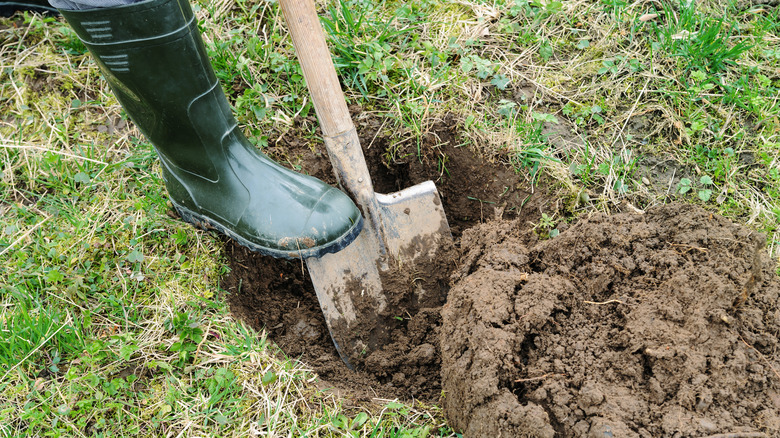Walking through the garden center, you spot a beautiful tree, perfect for that extra space in your yard that you’ve wanted to add a tree to anyway. You lug it home, but then you realize you must do the hard work of digging the right size hole for it. As you consider the best way to dig a hole for the tree, consider the actual size. The size of the hole, both in depth and diameter, can make a big difference in whether or not the tree thrives or if you’ll be heading back to the nursery.
There are numerous mistakes people make when planting a tree. That includes planting in the wrong season or planting with too much fertilizer. However, the size of the hole matters significantly and shouldn’t be something you guess — if you want the best results for your tree. If the hole is too deep, it might make it hard for the tree roots to establish because they cannot get enough oxygen. This can cause the roots to suffocate. If the hole is too shallow, the tree won’t have enough support in place to encourage it to grow. There are some differences here, based on the type of tree and dirt present. By default, you should always consider what the tree grower recommends or what the specific species requires to do well. In most cases, these tips will help you.
Get the hole the right size in diameter

Typically, you don’t have to dig a hole that’s super deep or wide for the tree. Rather, customize the hole based on the size of the tree root ball. The root ball is the compact dirt that sits around the roots, from the end of the tree trunk to the base. The go-to recommendation is to dig a hole that is about 2 to 5 times as wide as the root ball itself. How wide the hole is matters because you want to encourage the roots to grow outward. It’s a misconception that tree roots grow downward. Instead, most will grow outward in every direction. For that reason, you want to be sure there’s plenty of non-compacted soil for those roots to grow outward easily — encouraging strong growth and establishment.
If the soil is average, you can generally stick with digging the hole about 2 to 3 times the width, but go further if the soil is compacted tightly. Work to break up all the dirt in this space, including removing big rocks. That way, you’re removing anything that would otherwise impede the growth of the roots. The water will easily flow into this area, helping to support new root growth shoots. When you backfill after placing the tree in place, keep the soil loose enough to allow for good moisture penetration. Don’t compact it into place.
Getting the right depth for the tree hole
As for depth, don’t focus too much on a specific size recommendation. Planting the tree too deep is a big mistake for several reasons. First, the deeper it is, the harder it is for oxygen to get to the root system. You want those roots — especially the uppermost roots — to have good access to oxygen and airflow in general. That means they should not be more than an inch or two under the soil.
The rule of thumb for how deep your hole should be is just as deep as the root ball itself. You ultimately want the top of the root ball to grow at the same depth that it was growing in the nursery — or just so that it is no more than an inch under the top layer of soil. Also, note that you don’t want to place the root ball on soil that you’ve loosened, and you need very little soil prep for the tree. Instead, keep it on the compacted soil that’s already there. That way, as the tree and dirt settle, the top layers of the roots don’t get too low. Once you position the tree into the opening, lightly cover the top with loose soil. Make sure to locate the first-order roots, which are the first bigger roots coming directly out of the trunk. Those need to be close to the dirt surface for the best growth.